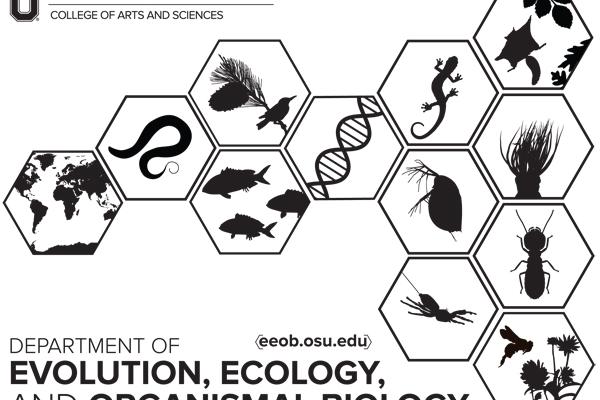Publications by EEOB faculty February 1 - February 29

Alerting and message components of white-crowned sparrow song differ in structure and environmental transmission
Douglas A. Nelson, Erica Szeyller, and Angelika Poesel. 2016. Behaviour. DOI: 10.1163/1568539X-00003341
Abstract
Signals that function over long distances, such as bird songs, must be detectable and discriminable from other signals by receivers despite being attenuated and degraded during environmental transmission. The acoustic design features that enhance detectability may conflict with those that enhance discriminability of different messages (e.g., the sender’s motivation or identity). The songs of many bird species begin with simple tonal notes, hypothesized to alert receivers to the following song parts. We describe structural differences in the songs of the Puget Sound white-crowned sparrow (Zonotrichia leucophrys pugetensis) and performed a transmission experiment to test if the whistle transmits differently than other song parts. As expected for an alerting component, the whistle phrases across different song types were highly similar, suffered less degradation when transmitted, and were produced at higher amplitude than the other two phrase types. These results suggest that in white-crowned sparrows alerting and message-bearing song phrases transmit differently.
Genetic diversity in migratory bats: Results from RADseq data for three tree bat species at an Ohio windfarm
Michael G. Sovic, Bryan C. Carstens, H. Lisle Gibbs. 2016. PeerJ 4:e1647. https://doi.org/10.7717/peerj.1647
Abstract
Genetic analyses can identify the scale at which wildlife species are impacted by human activities, and provide demographic information useful for management. Here, we use thousands of nuclear DNA genetic loci to assess whether genetic structure occurs within Lasiurus cinereus (Hoary Bat), L. borealis (Red Bat), and Lasionycteris noctivagans (Silver-Haired Bat) bats found at a wind turbine site in Ohio, and to also estimate demographic parameters in each of these three groups. Our specific goals are to: 1) demonstrate the feasibility of isolating RADseq loci from these tree bat species, 2) test for genetic structure within each species, including any structure that may be associated with time (migration period), and 3) use coalescent-based modeling approaches to estimate genetically-effective population sizes and patterns of population size changes over evolutionary timescales. Thousands of loci were successfully genotyped for each species, demonstrating the value of RADseq for generating polymorphic loci for population genetic analyses in these bats. There was no evidence for genetic differentiation between groups of samples collected at different times throughout spring and fall migration, suggesting that individuals from each species found at the wind facility are from single panmictic populations. Estimates of present-day effective population sizes varied across species, but were consistently large, on the order of 105–106. All populations show evidence of expansions that date to the Pleistocene. These results, along with recent work also suggesting limited genetic structure in bats across North America, argue that additional biomarker systems such as stable-isotopes or trace elements should be investigated as alternative and/or complementary approaches to genetics for sourcing individuals collected at single wind farm sites.
Contemporary evolution and the dynamics of invasion in crop-wild hybrids with heritable variation for two weedy life histories.
Lesley G. Campbell, Zachary Teitel, and Maria N. Miriti. 2016. doi: 10.1111/eva.12366
Abstract
Gene flow in crop-wild complexes between phenotypically differentiated ancestors may transfer adaptive genetic variation that alters the fecundity and, potentially, the population growth (λ) of weeds. We created biotypes with potentially invasive traits, early flowering or long leaves inwild radish (R. raphanistrum) and F5 crop-wild hybrid (R. sativus x R. raphanistrum) backgrounds, and compared them to randomly mated populations, to provide the first estimate of long-term fitness consequences of weedy life-history variation. Using a Life Table Response Experiment design, we modeled λ of experimental, field populations in Pellston, MI, and assessed the relative success of alternative weed strategies and the contributions of individual vital rates (germination, survival, seed production) to differences in λ among experimental populations. Growth rates (λ) were most influenced by seed production, a trait altered by hybridization and selection, compared to other vital rates. More seeds were produced by wild than hybrid populations and by long-leafed than early-flowering lineages. Although we did not detect a biotype by selection treatment effect on lambda, lineages also exhibited contrasting germination and survival strategies. Identifying life-history traits affecting population growth contributes to our understanding of which portions of the crop genome are most likely to introgress into weed populations.
Systematics of the parasitic wasp genus Oxyscelio Kieffer (Hymenoptera, Platygastridae s.l.), part III: African fauna
Abstract
